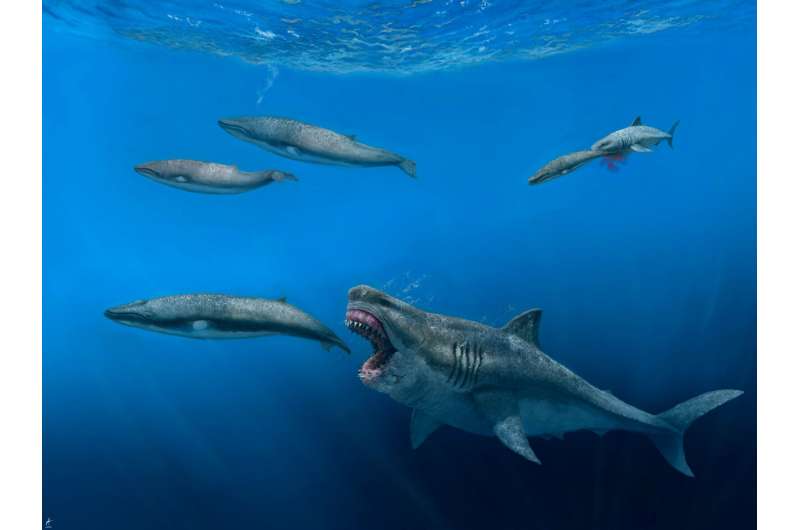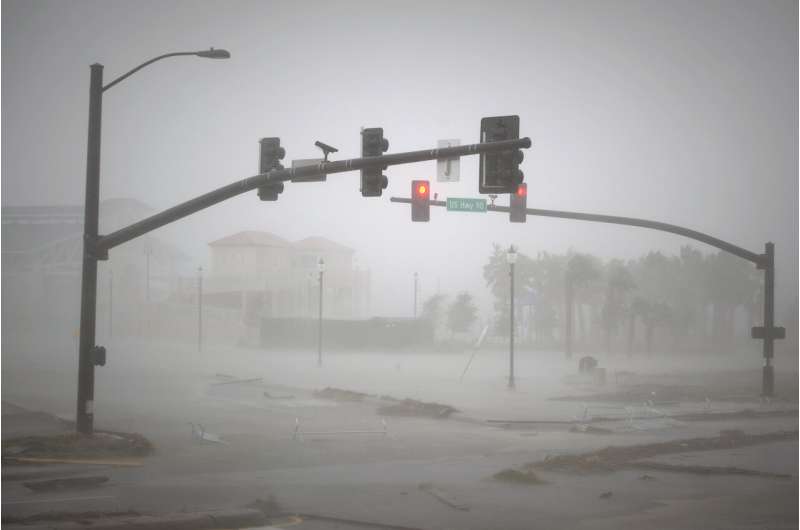Standing desks alongside other measures cut office workers' sitting time by an hour a day
Small improvements also seen in workers' stress, well-being, and energy levels at work
Peer-Reviewed Publication
Using a standing desk alongside a package of other measures to encourage office workers to sit less and move more, reduced sitting time by about an hour a day over one year, finds a trial published in The BMJ today.
These measures were also linked to small improvements in stress, wellbeing, and energy levels at work, although the researchers stress that these improvements were not clinically meaningful.
A growing body of evidence indicates that sedentary lifestyles are associated with higher levels of chronic disease, including heart diseases, type 2 diabetes, and some cancers, and higher rates of depression and anxiety.
Office-based workers are one of the most sedentary populations, spending 73% of their workday and 66% of their waking day sitting, but studies looking at ways to reduce sitting in the workplace have been deemed low quality.
To address these research gaps, a team of researchers based in the UK, with collaborators in Australia set out to evaluate the impact of SMART Work & Life (SWAL), an intervention designed to reduce sitting time and increase moving time at work, with and without a standing desk, delivered by workplace champions.
The trial involved 756 office workers from two councils in Leicester, three in Greater Manchester, and one in Liverpool. Participants were randomly assigned to the SWAL intervention, the SWAL intervention with a standing desk, or a control group (working as usual) over a 12 month period.
The average age of participants was 45, of which 72% were women, 75% were white British, and 85% worked full time. Average body mass index (BMI) at the start of the study was 26.5.
The SWAL intervention group were given a range of resources to help them reduce their sitting time, and highlight the health risks of too much sitting.
Workplaces were also encouraged to make small changes around the office to enable more movement, such as relocating printers and waste paper bins and creating standing areas for meetings.
The SWAL plus desk group also received a height adjustable desk to encourage less sitting time. The control group carried on working as usual.
Workers’ sitting time was measured using a device (accelerometer) worn on the thigh at the start of the study and again at 12 months.
Daily physical activity levels, and self-reported feedback about work, physical and mental health were also recorded.
The SWAL intervention plus standing desk was three times more effective at reducing sitting time than the SWAL intervention alone.
For example, at 12 months, daily sitting time for the SWAL group, and the SWAL plus standing desk were, respectively, 22 minutes and 64 per day minutes lower on average than the control group.
Small, but non-clinically meaningful improvements in stress, wellbeing, and a sense of work-related vigour were found for both intervention groups compared with the control group at three and 12 months, as well as lower limb pain (hips, knees and ankles) in the SWAL plus desk group.
Although time spent sitting was lower in both intervention groups compared with the control group, the researchers note that most participants simply replaced sitting with standing, and they say further work is needed to encourage more physical activity, particularly outside of working hours.
A randomised controlled trial is considered the most reliable way to determine whether an intervention actually has the desired effect, but the researchers do point to some limitations.
For example, participants were aware of the purpose of the device measuring their movement, which could have impacted their behaviour. And participants may have been selective in their responses to questionnaires - a phenomenon known as ‘reporting bias.’
However this was a large, well-designed trial that mimicked a real world intervention, and results were similar after further sensitivity analyses, suggesting that they are robust.
They also point out that participants were selected from three different areas in England, which bolsters the case for wider roll-out of the findings.
As such, the researchers say both SWAL and SWAL plus desk were associated with a reduction in sitting time, although the addition of a height adjustable desk was found to be threefold more effective.
And they point to areas for future research, such as exploring how people can best be supported to make changes outside of work and increase time spent moving, across different employment sectors and for a longer time period.
In a linked editorial, Professor Cindy Gray from the University of Glasgow says: “The findings are noteworthy because they come from a fully powered cluster randomised trial with objective measurement of sedentary behaviour at three and 12 months.”
However, she points out that the move to more home based and blended patterns of working after the covid-19 pandemic is likely to increase workforce sedentariness. Therefore, she says “understanding how to optimise occupational interventions to support people to sit less and move more around their home during both work and non-working hours is essential.”
[Ends]
JOURNAL
The BMJ
METHOD OF RESEARCH
Randomized controlled/clinical trial
SUBJECT OF RESEARCH
People
ARTICLE TITLE
Effectiveness of an intervention for reducing sitting time and improving health in office workers: three arm cluster randomised controlled trial
ARTICLE PUBLICATION DATE
17-Aug-2022
All rise!
Height-adjustable desks can reduce workplace sitting by over an hour a day
Peer-Reviewed PublicationResearchers at the National Institute for Health and Care Research (NIHR) Leicester Biomedical Research Centre (BRC) – a partnership between Leicester’s Hospitals, the University of Leicester and Loughborough University - have developed a programme that, when paired with a height-adjustable desk, can reduce the time people spend sitting by over an hour. To date, it is the largest study worldwide looking into programmes to overcoming sedentary behaviour in the workplace.
The team tested their ‘SMART Work and Life’ programme – training for workplace champions, educational resources, ongoing behaviour change support and a set of apps and software to monitor sitting time, - which has been developed for people who spend a lot of their day sitting down, in six local authorities across Leicester, Greater Manchester and Liverpool.
756 desk-based workers were put in one of three groups. The first group were given the SMART Work and Life programme alone; the second group received the SMART Work and Life programme and a height-adjustable desk, so they could sit or stand while working at their computer. A third group acted as a control with neither the SMART Work and Life programme nor the height-adjustable desk.
The research team monitored the sitting behaviour of participants via a small device worn on the thigh.
Researchers found that compared to the control group, people using the SMART Work and Life programme sat for 22 minutes less per day. For participants using both the SMART Work and Life programme and a height adjustable desk, this tripled to over an hour more time spent on their feet across the working day.
Interestingly, while participants using the programme and the height-adjustable desk reduced their sitting time in the workplace, this had little impact on behaviour at home, indicating that it is challenging to break sitting habits in leisure time.
In the UK, sedentary behaviours are known to contribute to over £700 million in NHS costs and were responsible for 69,276 deaths in 2016. The COVId-19 pandemic has further exacerbated these behaviours, and their consequences for public health, prompting policy interest in public health strategies that promote safe physical activity and reduce sedentary behaviours.
Desk-based workers spend around 70 per cent of their workday sitting down and many continue to spend time sitting once at home, with data showing they accumulate 9 to10 hours per day of sitting. Sedentary behaviour in the workplace also affects job performance and is associated with higher levels of presenteeism.
Dr Charlotte Edwardson, Associate Professor of Physical Activity Sedentary Behaviour and Health at the University of Leicester, and lead author of the paper, said: “Our results suggest a combination of education, motivational resources, peer support and standing desks has the greatest effect on reducing sitting in the workplace.
“These results are a major step in providing evidence-based tools to reduce sedentary behaviour and improve health in the workplace.”
Dr Alex Clarke-Cornwell, Reader in Public Health Epidemiology from the University of Salford, who is a co-author of the study, said: “Alongside the reduction in sitting time, participants perceived small improvements in stress, wellbeing, and work vigour. They also reported feeling more energised, focused and productive, with the group who also received the desk reporting fewer musculoskeletal issues.”
SMART Work and Life is a multi-component programme including a package of training for health and wellbeing champions with workplaces. It also includes educational resources, apps and software to track sitting time and get reminders to stand up more regularly, motivational posters, sitting less challenges, suggestions on how to make small environmental changes and many more helpful resources available to all who take part. It is facilitated by workplace champions who encourage participants and develop tailored strategies for individual teams.
Dr Edwardson and her team have turned the SMART Work and Life programme into an online resource kit which is easily accessible to organisations. SMART Work and Life is a great resource to use alongside height-adjustable desks, as part of an office environment change or as a stand-alone toolkit to encourage less sitting. The programme can be accessed here: www.smartworkandlife.co.uk
The article: “Effectiveness of the SMART Work & Life intervention for reducing sitting time and improving health in office workers: A three-arm cluster randomised controlled trial” can be found in the British Medical Journal today.
It was funded by the National Institute for Health and Care Research (NIHR), which funds, enables and delivers world-leading health and social care research that improves people's health and wellbeing and promotes economic growth.
Ends
JOURNAL
BMJ
METHOD OF RESEARCH
Randomized controlled/clinical trial
SUBJECT OF RESEARCH
People
ARTICLE TITLE
Effectiveness of an intervention for reducing sitting time and improving health in office workers: three arm cluster randomised controlled trial
ARTICLE PUBLICATION DATE
17-Aug-2022
COI STATEMENT
All authors have completed the ICMJE uniform disclosure form at www.icmje.org/coi_disclosure.pdf and declare: support from the National Institute for Health and Care Research (NIHR) public health research programme, the Leicester Clinical Trials Unit, and the NIHR Leicester Biomedical Research Centre. MHG is a co-inventor of the activPAL3 physical activity monitor and a director of PAL Technologies. DWD reports grants from National Health and Medical Research Council (Australia), Diabetes Australia, and the National Heart Foundation of Australia, during the conduct of the study. GNH reports grants from the National Health and Medical Research Council (Australia) during the conduct of the study. MJD reports personal fees from Novo Nordisk, Sanofi-Aventis, Lilly, Merck Sharp and Dohme, Boehringer Ingelheim, AstraZeneca, Janssen, Servier, Mitsubishi Tanabe Pharma, and Takeda Pharmaceuticals International, and grants from Novo Nordisk, Sanofi-Aventis, Lilly, Boehringer Ingelheim, and Janssen outside the submitted work.





